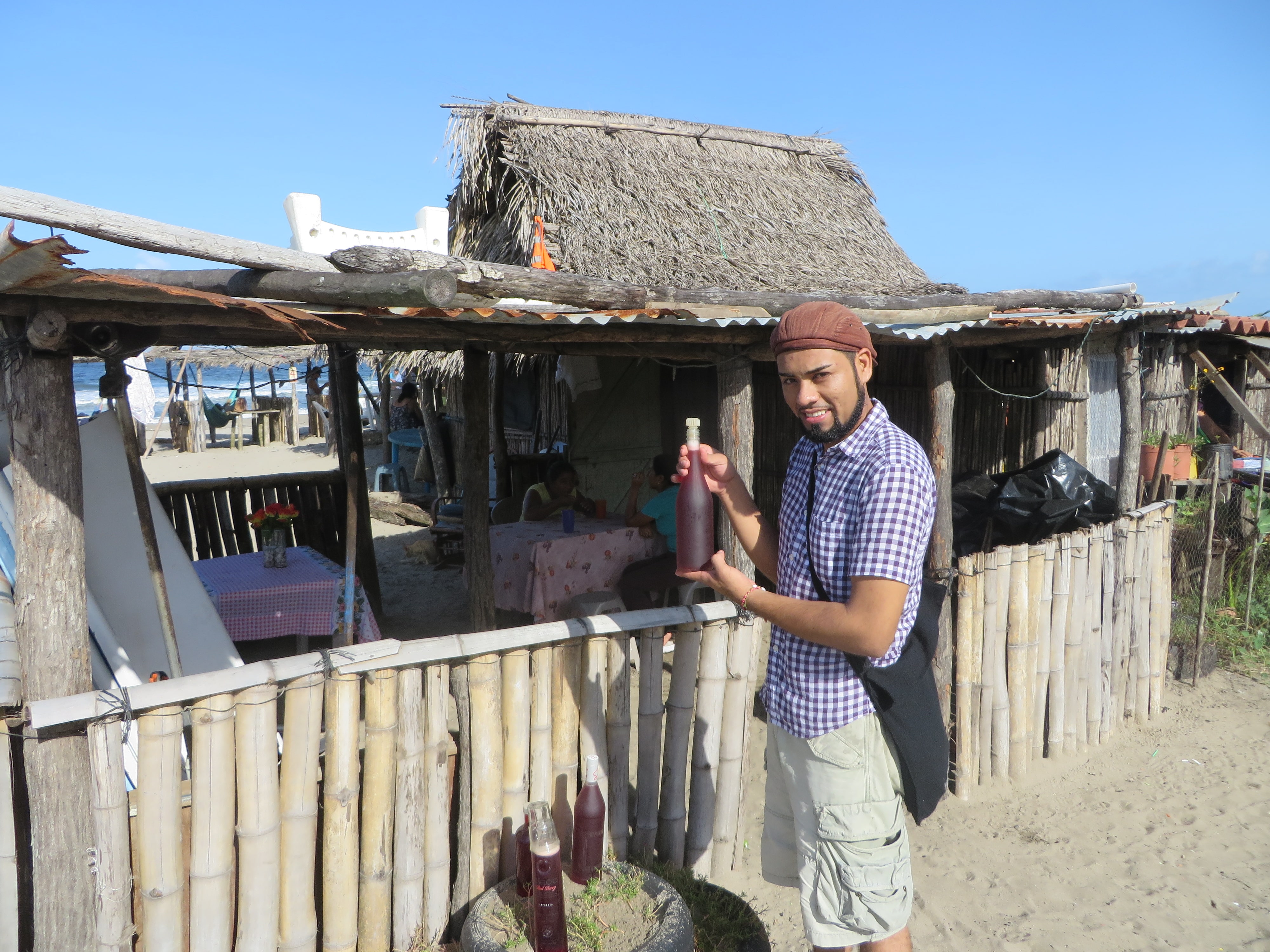
A constantly shifting sandspit divides the pounding blue-gray surf of the Bay of Tela from a freshwater mangrove-lined lagoon, home to pelicans, herons and crocodiles. A yellow banner flutters in the wind: “Todas y todos somos Barra Vieja” (We are all Barra Vieja), it reads, announcing the entrance to the Afro-Caribbean Garifuna village.
The same sign inspired a name for a late-November refresher course for 60 young leaders from across northern Honduras; they were trained by the Jesuit-run Reflection, Research and Communications Team, known by its Spanish acronym as the ERIC foundation. Welcomed by pulsating Garifuna drums, the young people strung up a hammock in the straw shack of the family to which they had been assigned. Braving voracious mosquitoes and sandflies, they spent the weekend developing skits on current affairs, learning how to protect activists whose actions have brought anonymous death threats, and mingling with the Garifuna people, whom the Honduran government is trying to chase from this pristine island paradise.
“We bring the young people – who are leaders of community struggles against corruption, hydroelectric projects, or mines across the region – to the persecuted Garifuna community of Barra Vieja so they can understand that they share the same struggle,” said Pedro Landa of the ERIC foundation. Landa was one of the organisers of eight weekend courses where young people learn how to be leaders in confronting the complexities of a country known for extreme poverty, one of the highest murder rates in the world and state economic policies that many have said amount to selling the country’s natural resources to the highest bidder.
“At the same time, we want to show our solidarity with the Garifuna people of Barra Vieja, so that they feel less alone,” he said.
The image of the exotic Garifuna people, their punta dance rhythms and their legendary “sopa de caracol” (conch soup), is used to attract tourists to the north coast. About 600,000 Garifuna live along the Caribbean coast of Central America; they are the descendants of a ship that brought slaves from Central and West Africa.
Today, the Garifuna of Barra Vieja live in fear and extreme poverty. After two violent evictions by the army in 2014 to make way for an extension to a luxury beach hotel nearby, the population of this community has dwindled to about 250.
Armando Gamboa, Barra Vieja leader, said when people first heard about the resort, they thought it would bring jobs and opportunity, but when they saw the neighbouring Garifuna village evicted and no jobs for their people, they realised they were about to lose out.
The people of Barra Vieja eke out a living from fishing. There is no electricity, running or drinking water on the island; for health facilities and schools, they have to travel to nearby villages, resulting in low school attendance. Some of the people, including children, have visible leg deformities, suggesting a past polio epidemic, and HIV and AIDS remain prevalent.
Their extreme ostracism has brought with it a host of social problems. Women accuse the men of machismo, and cases of rape and incest are common, said Calixta Martinez of the Free Butterflies Women’s Network, a Garifuna women’s organisation.
“Young boys here are told that they must become real men and that women are the weaker sex,” said Martinez, whose group tries to teach women that they have rights and must complain when these are violated.
The women and children here have been hardest hit by the evictions and repression, residents said.
“We have lived in peace on these lands since 1887,” said community president Carlos Castillo. “Yet the Port of Tela, who claim these lands as theirs to develop, has existed only since 1962. How can they say we are invaders?” He said the state has offered them no alternative lands for resettlement.
The Honduran government claims the Garifuna of Barra Vieja are foreigners and filed charges of encroachment against 66 community members. The Garifuna claim they have right to the land, by virtue of having lived on it for more than a century.
However, in June, the Garifuna won a legal victory, as the court in Tela ruled that the state could not prove its ownership of Barra Vieja, and dropped charges. The courthouse was unable to accommodate the 66 accused, and hearings had to be held on the former grounds of the now-defunct Tela Railroad Company, the fruit company whose activities dominated the local economy and whose alleged exploitation of workers on company plantations became legendary.
Community leader Armando Gamboa said the resort developers will appeal the Tela decision. He told the young community leaders: “Your presence makes us feel less alone … we feel our lives are in danger.”
The people are so fearful that during role-play presentations, where youth leaders acted out government persecution of activists who oppose mining, a Garifuna child ran screaming from the area, thinking that the actors were really government representatives.
The experience is something the youth leaders will take home with them.
“This weekend has been like stepping into a different country,” said Osman Orellana, a worker at Our Lady of the Pillar parish in Arizona, 40 minutes east of Barra Vieja. “Those of us who live nearby want to offer a special commitment to the Garifuna of Barra Vieja. We are already thinking of how we can come here regularly, and pass on to them some of the leadership skills we have learned. They need our solidarity.”
